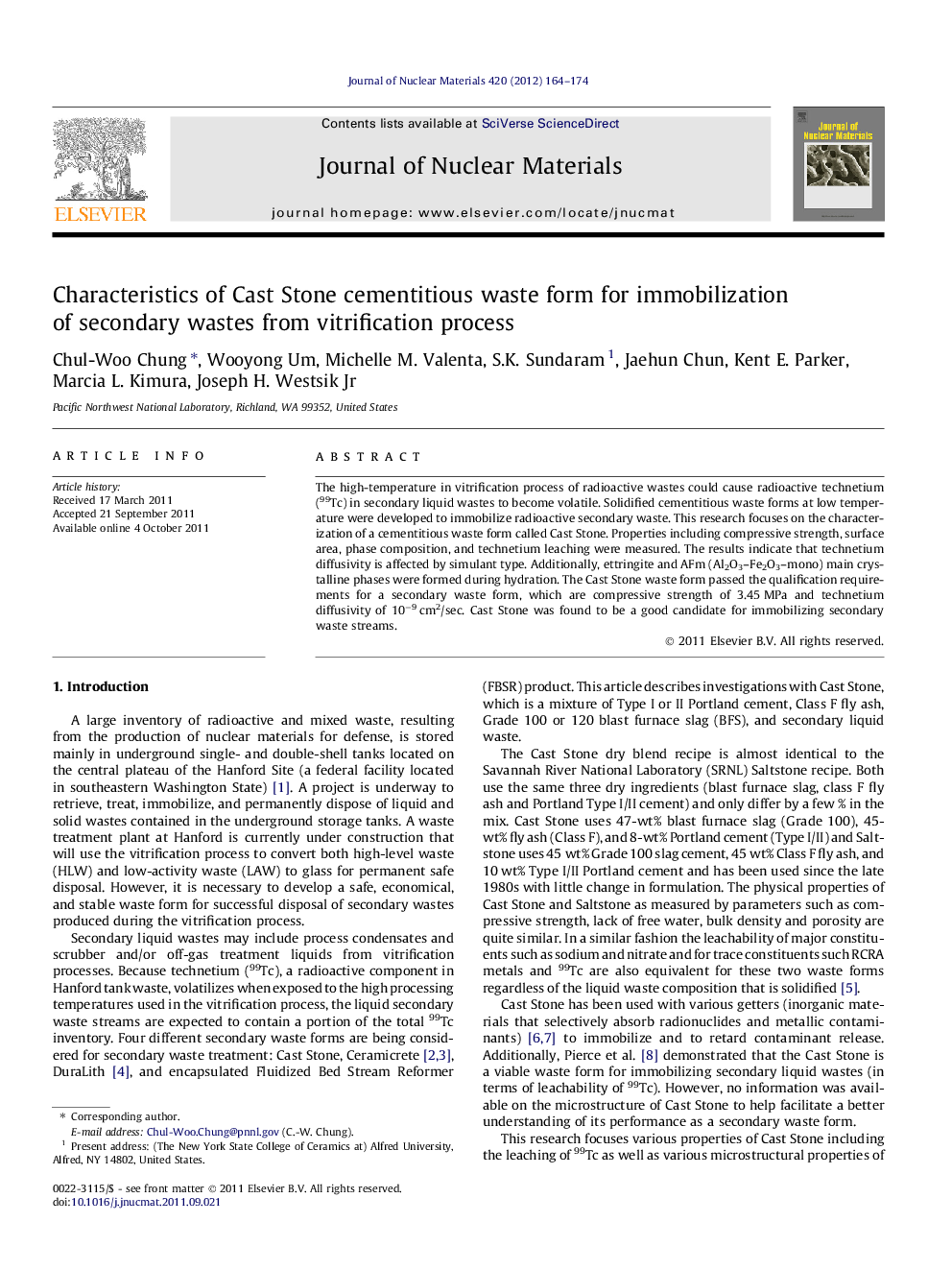| کد مقاله | کد نشریه | سال انتشار | مقاله انگلیسی | نسخه تمام متن |
|---|---|---|---|---|
| 1566451 | 1514226 | 2012 | 11 صفحه PDF | دانلود رایگان |

The high-temperature in vitrification process of radioactive wastes could cause radioactive technetium (99Tc) in secondary liquid wastes to become volatile. Solidified cementitious waste forms at low temperature were developed to immobilize radioactive secondary waste. This research focuses on the characterization of a cementitious waste form called Cast Stone. Properties including compressive strength, surface area, phase composition, and technetium leaching were measured. The results indicate that technetium diffusivity is affected by simulant type. Additionally, ettringite and AFm (Al2O3–Fe2O3–mono) main crystalline phases were formed during hydration. The Cast Stone waste form passed the qualification requirements for a secondary waste form, which are compressive strength of 3.45 MPa and technetium diffusivity of 10−9 cm2/s. Cast Stone was found to be a good candidate for immobilizing secondary waste streams.
► General properties of Cast Stone used for the stabilization of 99Tc are investigated.
► Ettringite and AFm phases are the main crystalline hydrated phases.
► Compressive strength and 99Tc leachability passed IDF requirements.
Journal: Journal of Nuclear Materials - Volume 420, Issues 1–3, January 2012, Pages 164–174